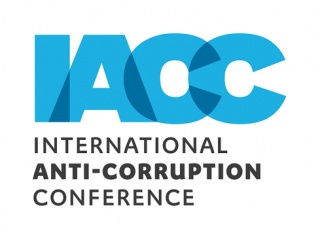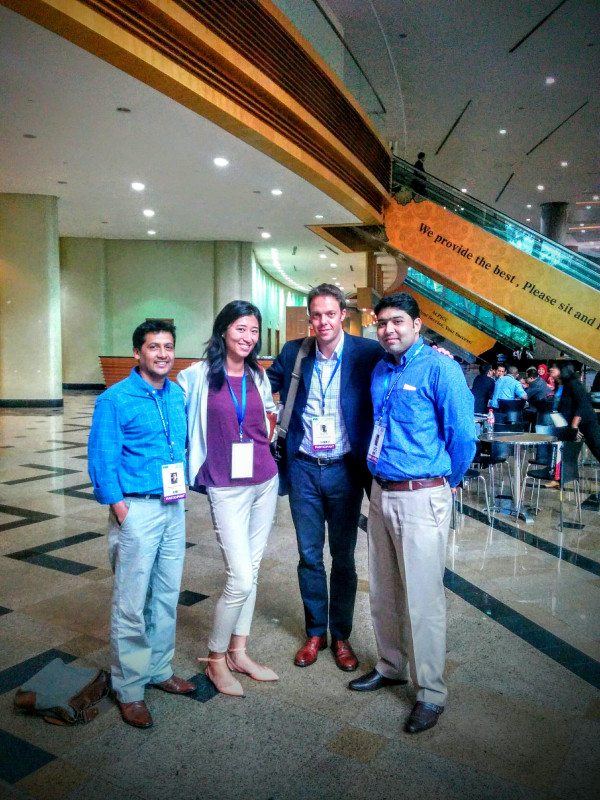NEWS
September 8, 2015

IN BRIEF
By: Blair Glencorse, Executive Director There was plenty of irony in the fact that Transparency International’s (TI) flagship meeting- the International Anti-Corruption Conference (IACC)- took place in Malaysia last week during the largest ever protests against corruption in the country’s history. The Prime Minister perhaps sensibly stayed away from the meeting in the end, but Jose Ugaz, the President of TI, certainly wasn’t going to let him get away that easily, asking publicly in the opening session: “Who paid the money and why? Where did it go?” This set the tone- there was a refreshing directness and focus at the [...]
SHARE
 By: Blair Glencorse, Executive Director
By: Blair Glencorse, Executive Director
There was plenty of irony in the fact that Transparency International’s (TI) flagship meeting- the International Anti-Corruption Conference (IACC)- took place in Malaysia last week during the largest ever protests against corruption in the country’s history. The Prime Minister perhaps sensibly stayed away from the meeting in the end, but Jose Ugaz, the President of TI, certainly wasn’t going to let him get away that easily, asking publicly in the opening session: “Who paid the money and why? Where did it go?”
This set the tone- there was a refreshing directness and focus at the conference, and despite what is happening in Malaysia, plenty to celebrate: country level successes in places like the Philippines and Tunisia; a sense that multilateral initiatives like the Open Government Partnership are truly beginning to yield results; a much greater interest in and role for business in collective action to fight corruption, and so on. As recently as a decade ago the consensus on corruption as a core obstacle to inclusive development was still fragile- but I came away with the sense that this is certainly no longer the case.
That said, the discussions indicated that we still have a long way to go in terms of implementation- “we can’t fight corruption in the abstract” as Aruna Roy pointed out. The conversations around accountability can still be too esoteric and the effects of large-scale graft have to be made relevant to average citizens. This isn’t just a question of people in power enriching themselves- it is in practice a question of life and death and we need to explain it as such (research shows that tax evasion kills 1,000 children every day for instance). While I don’t think the ONE campaign team were at the conference, they do a great job of this sort of thing. Corruption is undermining the prosperity and dignity of future generations- and making this idea real helps build support against it.
 Street protests like those taking place in Malaysia are great for awareness and engagement- and may lead to cosmetic changes (a leader resigning here or a pledge made there)- but are not going to generate long-term solutions to deep, complex and highly political problems. Generating accountability is the unglamorous, often unheralded work of local civil society activists who push for reforms, government bureaucrats who build systems of integrity and lawyers who defend the rule of law. Many of these types of people were at the conference and the discussions reinforced the idea that we have to find creative ways to support them in their long, difficult fight. (Ideas I heard around the hallways and liked included: an international, rapid reaction anti-corruption corps to provide support during political transitions; small catalytic and flexible funding mechanisms for creative civil society efforts; shared community spaces to build accountability eco-systems and in-country collaborative tools).
Street protests like those taking place in Malaysia are great for awareness and engagement- and may lead to cosmetic changes (a leader resigning here or a pledge made there)- but are not going to generate long-term solutions to deep, complex and highly political problems. Generating accountability is the unglamorous, often unheralded work of local civil society activists who push for reforms, government bureaucrats who build systems of integrity and lawyers who defend the rule of law. Many of these types of people were at the conference and the discussions reinforced the idea that we have to find creative ways to support them in their long, difficult fight. (Ideas I heard around the hallways and liked included: an international, rapid reaction anti-corruption corps to provide support during political transitions; small catalytic and flexible funding mechanisms for creative civil society efforts; shared community spaces to build accountability eco-systems and in-country collaborative tools).
Part of the solution will continue to be “naming and shaming” those engaged in graft- and given its heft, Transparency International is in a great position to do that. Recently it launched a high profile “Unmask the Corrupt” effort to uncover the largest corruption scandals in the world and advocate for governments to crack down on the perpetrators. Matched with targeted international support for national anti-corruption efforts (like the International Commission Against Impunity in Guatemala) deterrence and enforcement can prove effective. But here at the Lab we are in the midst of Integrity Idol 2015 and at the IACC we also discussed the idea of “naming and faming” as a large part of the solution to these challenges (Integrity Idol is the Lab’s television competition to highlight and celebrate honest government officials). This approach is aspirational and we find it creates a different narrative that young people in particular can buy into. This alternative, positive reality moves beyond a focus on misdeeds and builds hope in the future.
This leads me to a final point: much of the energy at the conference came from young people- the activists, the technologists, the social entrepreneurs and the journalists. The organizational forms we need to fight corruption are clearly changing as civic space closes- and our experience is that young people are in any case fed up with the instrumentalization of civil society which is so often the unintended effect of donor initiatives. They come together in collectives, networks and movements that are more dynamic, flexible and amorphous than the anti-corruption organizations of the past- at the IACC we heard from iWatch and Anti-Corruption International, for example, both working in highly creative ways to build integrity.
To its great credit, Transparency International recognizes and understands this, but making sure these kinds of initiatives amount to more than the sum of their parts is difficult. So the biggest question for me ahead of the next IACC, is: how can we make sure the energy of youth is channeled effectively towards anti-corruption as the defining cause for the next generation? At the Accountability Lab we’re thinking hard about this- let us know if you have ideas.
